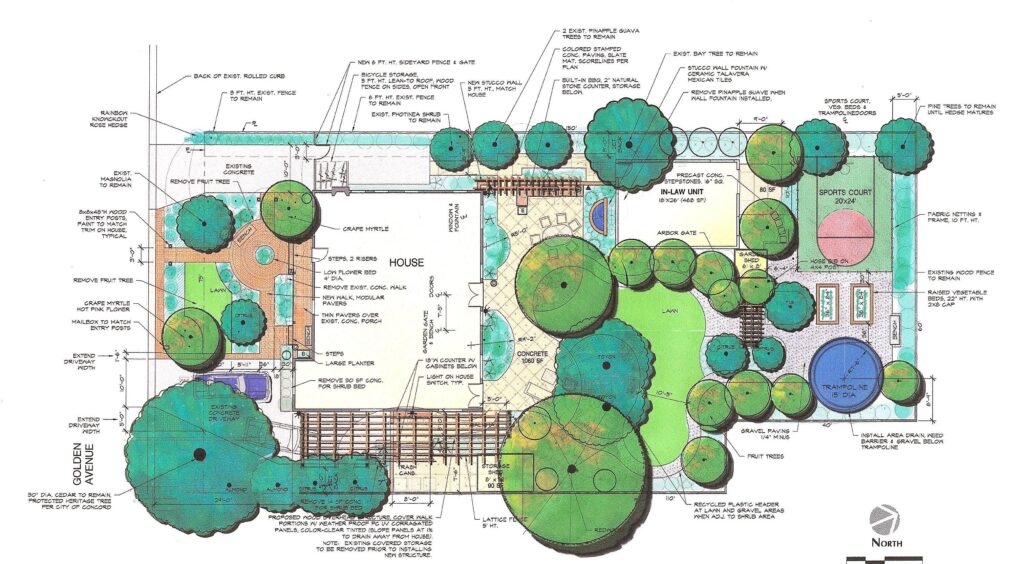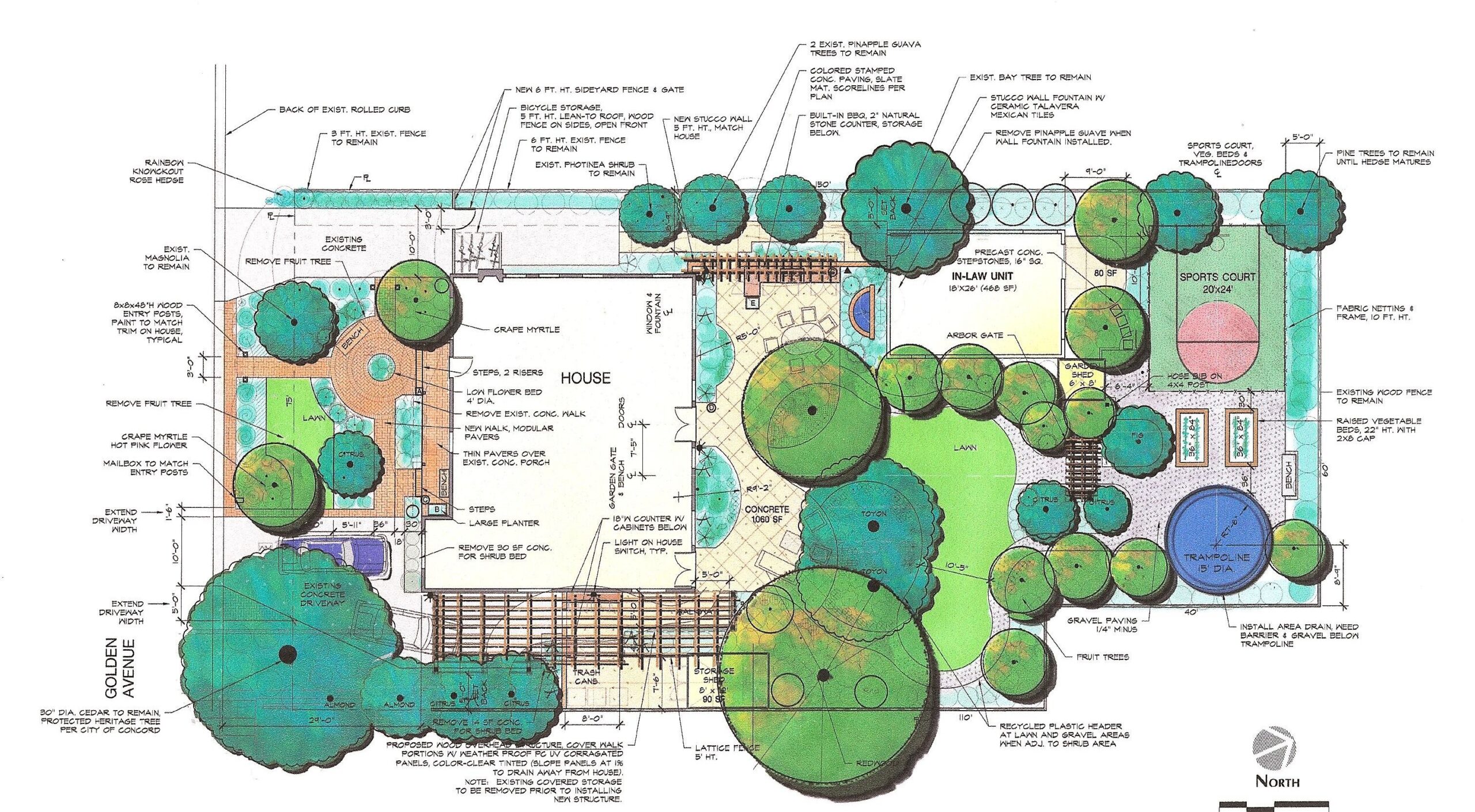
Transform Your Outdoor Space: The Ultimate Guide to Landscape Design
Landscape design is more than just arranging plants; it’s an art and science that transforms outdoor spaces into functional, aesthetically pleasing environments. Whether you’re a homeowner dreaming of a backyard oasis or a business owner looking to enhance curb appeal, understanding the principles of landscape design is crucial. This comprehensive guide will delve into the key elements, considerations, and steps involved in creating a landscape design that meets your needs and reflects your personal style. From initial planning to final execution, we’ll cover everything you need to know about landscape design.
Understanding the Fundamentals of Landscape Design
Before diving into specific design elements, it’s essential to grasp the fundamental principles that underpin effective landscape design. These principles provide a framework for creating harmonious and balanced outdoor spaces. Key principles include:
- Balance: Achieving visual equilibrium through symmetry, asymmetry, or radial arrangements.
- Proportion: Ensuring that elements are appropriately sized in relation to each other and the overall space.
- Unity: Creating a cohesive design where all elements work together harmoniously.
- Rhythm: Establishing visual interest through repetition and variation of elements.
- Emphasis: Highlighting focal points to draw the eye and create visual hierarchy.
By understanding and applying these principles, you can create a landscape design that is both visually appealing and functional. Think of landscape design as an extension of your home’s interior – a seamless transition between indoor and outdoor living.
The Essential Elements of Landscape Design
A successful landscape design incorporates a variety of elements to create a dynamic and engaging outdoor space. These elements include:
Plant Selection
Choosing the right plants is paramount. Consider factors such as climate, soil type, sunlight exposure, and maintenance requirements. Native plants are often a great choice as they are well-adapted to the local environment and require less water and fertilizer. Think about the mature size and shape of plants to ensure they fit well within the design. A well-thought-out plant palette can provide year-round interest with varying textures, colors, and blooms. Choosing plants that attract pollinators can also enhance the ecological value of your landscape design.
Hardscaping
Hardscaping refers to the non-living elements of your landscape, such as patios, walkways, walls, and water features. These elements provide structure and functionality to the space. Materials like stone, brick, concrete, and wood can be used to create different textures and styles. Hardscaping should complement the natural environment and enhance the overall design aesthetic. Consider the durability and maintenance requirements of different hardscaping materials when making your selections.
Water Features
Water features can add a sense of tranquility and visual interest to any landscape. Options range from small fountains and ponds to elaborate waterfalls and streams. Consider the size and style of your landscape when choosing a water feature. A well-designed water feature can become a focal point and create a relaxing atmosphere. Remember to factor in maintenance requirements, such as cleaning and water treatment.
Lighting
Outdoor lighting extends the usability of your landscape into the evening hours. Well-placed lighting can highlight architectural features, illuminate pathways, and create a warm and inviting ambiance. Consider using a combination of ambient, task, and accent lighting to achieve the desired effect. LED lighting is an energy-efficient and long-lasting option. [See also: Outdoor Lighting Design Ideas]. Thoughtful lighting design enhances both the beauty and safety of your outdoor space.
Grading and Drainage
Proper grading and drainage are essential for the health and longevity of your landscape. Ensure that water flows away from your home’s foundation to prevent water damage. Consider installing drainage systems, such as French drains or swales, to manage excess water. Proper grading can also create level areas for patios, walkways, and other outdoor features. Addressing drainage issues early in the design process can save you from costly repairs later on.
The Landscape Design Process: A Step-by-Step Guide
Creating a successful landscape design involves a systematic process. Here’s a step-by-step guide to help you get started:
- Assessment and Planning: Begin by assessing your existing landscape. Identify areas that need improvement, consider your budget, and define your goals. What do you want to achieve with your landscape design? Do you want to create a relaxing retreat, an entertainment space, or a functional garden?
- Site Analysis: Conduct a thorough site analysis to understand the existing conditions. This includes mapping the location of existing trees, shrubs, and structures. Note the direction of sunlight, wind patterns, and soil type. Identify any potential challenges, such as drainage issues or steep slopes.
- Conceptual Design: Develop a conceptual design that outlines the overall layout and features of your landscape. This can be a simple sketch or a more detailed plan. Experiment with different ideas and layouts until you find one that meets your needs and aesthetic preferences.
- Detailed Design: Once you have a conceptual design, develop a detailed plan that includes specific plant selections, hardscaping materials, and construction details. This plan should be precise and include all necessary dimensions and specifications.
- Implementation: Implement your landscape design according to the detailed plan. This may involve hiring contractors to perform certain tasks, such as grading, hardscaping, or planting. Supervise the work to ensure that it is done correctly and according to your specifications.
- Maintenance: Maintain your landscape design to keep it looking its best. This includes regular watering, fertilizing, pruning, and pest control. Develop a maintenance schedule to ensure that your landscape remains healthy and vibrant.
Landscape Design Styles: Finding Your Inspiration
There are many different landscape design styles to choose from, each with its unique characteristics and aesthetic appeal. Exploring different styles can help you find inspiration and refine your own design preferences.
Formal Gardens
Formal gardens are characterized by symmetry, geometric shapes, and manicured plants. They often feature clipped hedges, topiary, and symmetrical planting beds. Formal gardens are typically well-maintained and require regular pruning and shaping. [See also: Classic Garden Design Ideas]. This style exudes elegance and order.
Informal Gardens
Informal gardens, also known as cottage gardens, are more relaxed and naturalistic. They feature a mix of plants with varying textures, colors, and heights. Informal gardens often include winding paths, natural stone features, and a sense of spontaneity. This style is perfect for those who prefer a more relaxed and carefree aesthetic.
Xeriscaping
Xeriscaping is a water-wise landscaping technique that utilizes drought-tolerant plants and efficient irrigation methods. It is ideal for arid and semi-arid climates where water conservation is a priority. Xeriscaping can reduce water consumption and maintenance costs while creating a beautiful and sustainable landscape. Consider using gravel mulch, native plants, and drip irrigation to maximize water efficiency.
Japanese Gardens
Japanese gardens are designed to create a sense of tranquility and harmony with nature. They often feature elements such as rocks, water, moss, and carefully pruned trees. Japanese gardens emphasize simplicity, balance, and the beauty of natural materials. This style is perfect for those seeking a serene and contemplative outdoor space.
The Importance of Sustainable Landscape Design
Sustainable landscape design focuses on creating environmentally friendly and ecologically responsible outdoor spaces. This involves using native plants, conserving water, reducing pesticide use, and minimizing waste. Sustainable landscape design benefits both the environment and your wallet. By choosing sustainable practices, you can create a beautiful and healthy landscape that requires less maintenance and resources. Consider incorporating rainwater harvesting, composting, and organic gardening techniques to further enhance the sustainability of your landscape design.
Hiring a Landscape Design Professional
While it’s possible to tackle landscape design on your own, hiring a professional can provide valuable expertise and guidance. A landscape designer can help you develop a comprehensive plan that meets your needs and budget. They can also provide advice on plant selection, hardscaping materials, and construction techniques. When choosing a landscape designer, look for someone with experience, a strong portfolio, and a good understanding of your aesthetic preferences. Be sure to discuss your budget and expectations upfront to ensure a successful collaboration. The cost of landscape design services can vary depending on the scope and complexity of the project.
Common Landscape Design Mistakes to Avoid
Even with careful planning, it’s easy to make mistakes in landscape design. Here are some common pitfalls to avoid:
- Ignoring Soil Conditions: Failing to test and amend the soil can lead to poor plant growth and health.
- Overcrowding Plants: Planting plants too close together can result in overcrowding and competition for resources.
- Neglecting Maintenance: Failing to regularly maintain your landscape can lead to overgrown plants, weed infestations, and other problems.
- Poor Drainage: Inadequate drainage can cause water damage to your home and landscape.
- Lack of Planning: Rushing into the design process without a clear plan can result in a disjointed and unattractive landscape.
By avoiding these common mistakes, you can create a landscape design that is both beautiful and functional for years to come.
Conclusion: Creating Your Dream Landscape Design
Landscape design is a transformative process that can enhance the beauty, functionality, and value of your property. By understanding the principles of landscape design, considering the essential elements, and following a systematic design process, you can create an outdoor space that meets your needs and reflects your personal style. Whether you choose to tackle the project yourself or hire a professional, remember to prioritize sustainability, plan carefully, and avoid common mistakes. With careful planning and attention to detail, you can transform your outdoor space into a stunning landscape design that you’ll enjoy for years to come. The key is to consider your lifestyle, budget, and the existing environment to create a cohesive and harmonious design.

